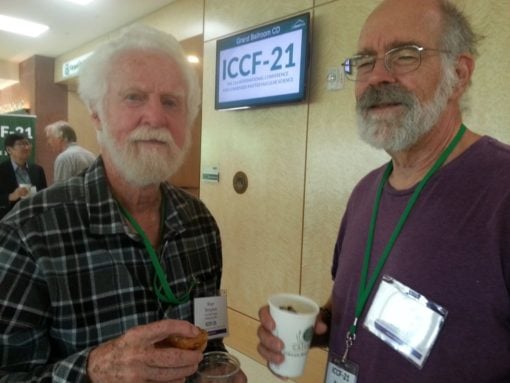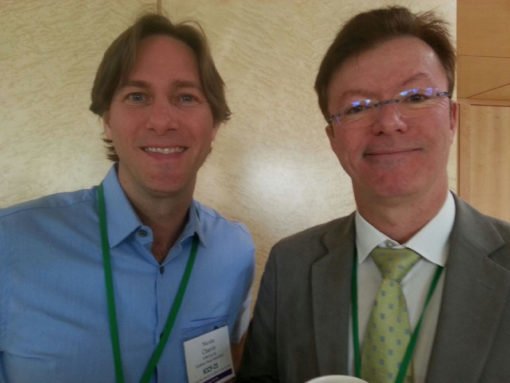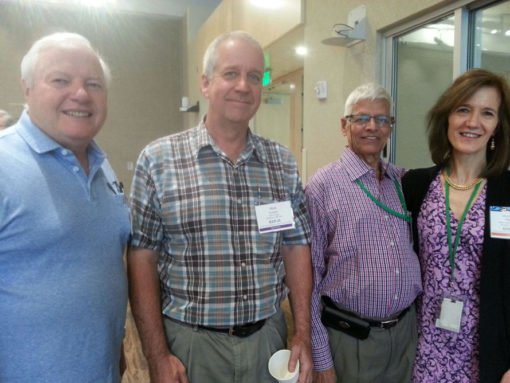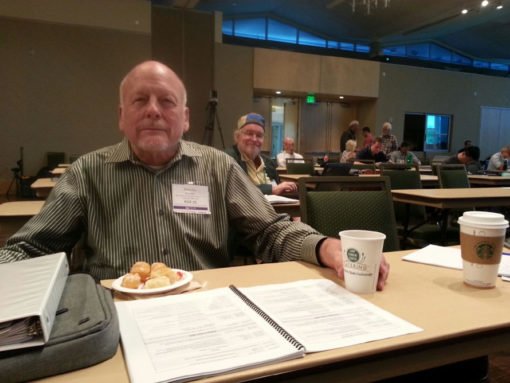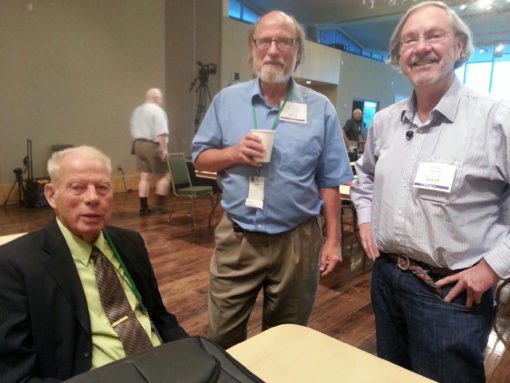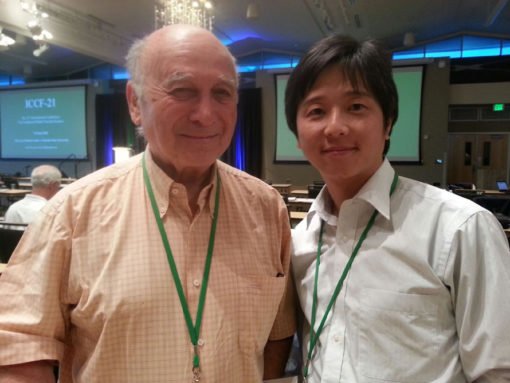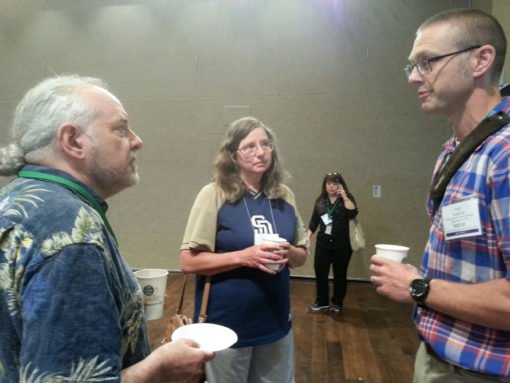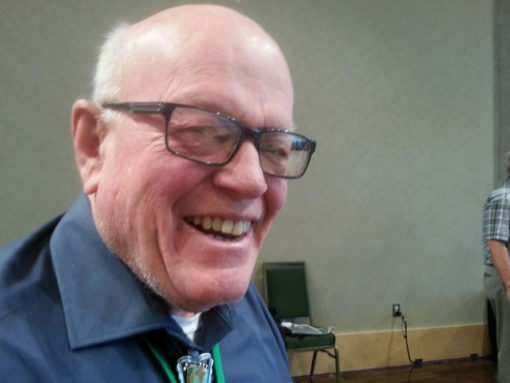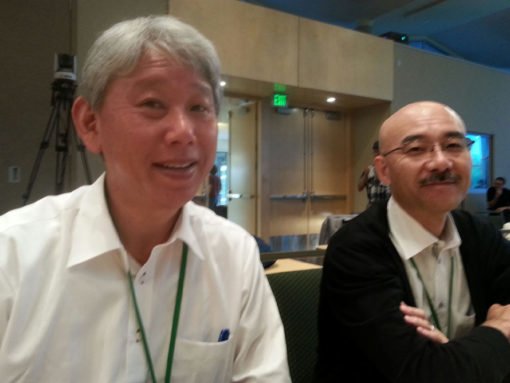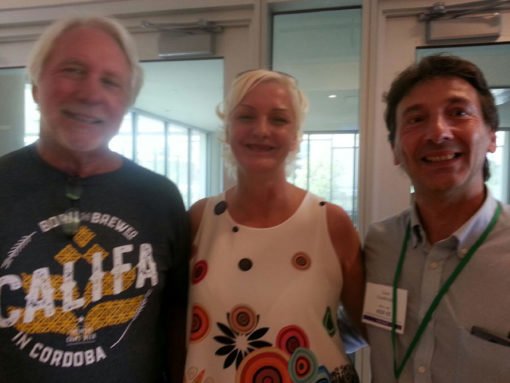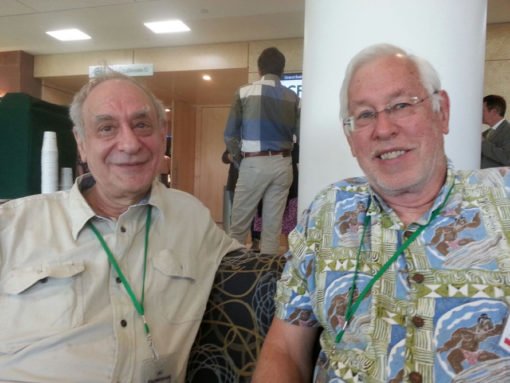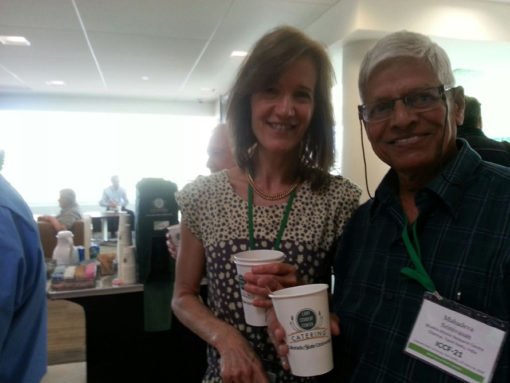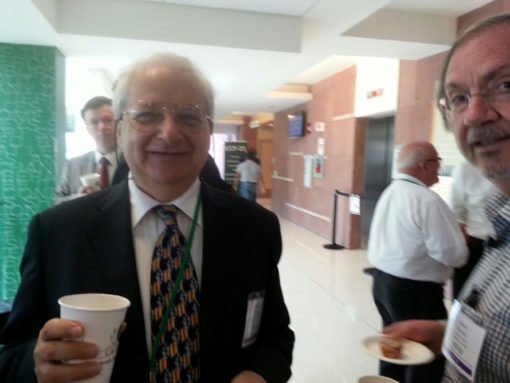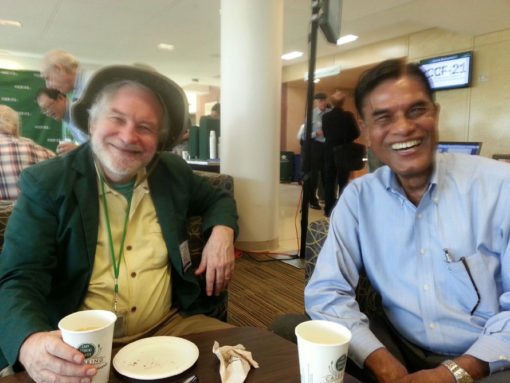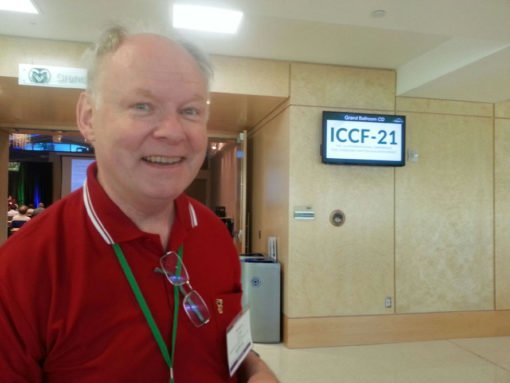- 21st International Conference on Condensed Matter Nuclear Science
ICCF-21 Presentation Index
Monday, June 4
Tuesday, June 5
Wednesday, June 6
Thursday, June 7
Thursday evening Awards Banquet
Friday, June 8 Presentations and Summary
Thursday’s lectures began with Akito Takahashi chairing the Diverse Experiments session and introducing Jacques Ruer with Considerations on Chemical Reactions and LENR.
Ruer has investigated explosions in LENR experiments in an attempt to discern whether the origins are chemical or nuclear.
Shock waves can be created by blasts of hot gas, and this is what Ruer reproduced. He believes this is what might be behind the explosion that JP Biberian experienced in 2014.
Removing an H-loaded Pd cathode rod from the cell, it retains it’s heat. Ruer simulated the system and he found that small rods get hotter, but not for long. High-loading increases the temperature, too. De-sorption is slow if the surface is non-reactive.
The Maximum temperature can exceed 1000 degrees. Peak is reached after several minutes. Large Pd pieces glow longer, but giver lower peaks.
Ruer referenced the 1985 March 1-cm-cube Pd cathode explosive-meltdown reported by Fleischmann and Pons. The bench was destroyed and a hole about 40 cm was made. He speculates that it may be a SWACER (shock wave __ ). The glowing cube of Pd may have introduced sufficient stresses in the flow to break pieces of concrete.
Ruer ended by looking at the names given to this science over the years: Cold Fusion, LANR, LENR, AHE, MHE… The last one is important, he says, “because it does not contain the word nuclear”.
“Nuclear reactions are not the root cause of what we observe”, says Ruer, “as that is the result of effects of Quantum physics.” He wants to say “Quantum effects energy” as it avoids the word Nuclear. It breaks the wall for the “4 miracles problem”. Ruer believes it describes accurately what is the focus of our theoretical students.
He quotes Neils Bohr: ” Anyone not shocked by quantum mechanics has not yet understood!” and then asks what would be the best acronym for this now-called-LENR reaction?
Ruer proposes QUEEN: QUantum-Effects-ENergy
Xing Zhong Li talks about Temperature Dependence of Excess Heat in Gas-Loading Experiments by Z. M. Dong et al.
Li wanted to show additional support for Edmund Storms‘ linear relationship between excess heat and temperature so they decided to use F&P’s “heat after death” effect experiment.
One bottle filled with H one bottle filled with D with a palladium wire in both. Li expected to find each cooling at a different rate, due to the difference in H or D.
Two sets of data supported not only the temperature dependence of excess heat in gas-loading
experiment, but also revealed the diffusion nature of this straight line. He repeats again, the FPHE is a real fact.
Katduaki Tanabe of Kyoto University presents Direct Joule Heating of D-Loaded Bulk Pd Plates in Vacuum by Y. Kitagawa et al .
Multi-layered deuterium containing Pd plates is applied a bias voltage across the Pd sample to proved a current injection through Pd to stimulate the nuclear reaction by Joule heating.
Temperatures were significantly higher with D loading than not.
The group also observed excess heat. Excess heat around 0.5 watt lasting >10 hours. The temporal behavior for the heat generation is unable to be explained by known chemical processes, which indicates an existence of some nuclear process or unknown phenomenon.
70% re-producible neutron signal peaks corresponded to the accelerated temperatures was found to be proportional to the distance to the pd sample.
Excess heat bursts were temporally coinciding with the neutron peaks.
The plate also bent about 1mm. After excluding all trivial causes, they found the change in the lattice constant was as large as 3%, and it is hypothesized the the Pd bend is possibly related with alpha-beta phase transition.
Tom Claytor presents Stringham Sono-Cell Replication by Roger Stringham et al.
Claytor had tested some of Stringham’s sample early for tritium and other nuclear signatures, and found nothing. Then, Stringham sent his sample to Brian Oliver who found some interesting helium-effects.
Years later, Claytor saw Stringham with a very small (1″x 1″) demonstration cell, and Claytor recognized that he would be able to easily test the foil for evidence of nuclear effects.
He wanted to verify the heat results of the cavitation method and had help from IH, Edmund Storms, and Coolescence.
Conventional cavitation is collapsing bubbles in liquid, but Stringham found multi-bubble cavitation on Metal s in D2O
bubbles collapse near a a metal surface and are energetic enough to work the surface.
The bubbles are only a few microns in diameter.
At first, they saw nothing. Analyzing the system they saw there are many factors effecting the cavitation effect, including the chemical composition of the foil.
After managing more of the parameters, a significant amount of heat is dissipated in the transducer.
Still, various samples gave an average of ~3 Watt excess
The effect is probably a near surface effect and is material dependent, its very dynamic and needs to be tamed, excess heat cna probably increase, but how much? Roger Stringham’s claims are confirmed.
George Egely with Changes of Isotope Ratios in Transmutations
He began by speculating if the heat in Saturn could be LENR generated. He has a model of “dusty plasma fusion”.
Egely has experimentally transmuted lighter mass elements like carbon, oxygen and nitrogen via one or two fusion steps into medium mass elements like iron, zinc, copper with no major energy release and neutron-rich daughter elements.
Egely says that transmutation is far more frequent in nature than expected. He showed video of his glass reactor, all glowing and moving, and afterwords, finds transmutations in the chamber. He said, “This is the way to do transmutations in the simple way.”
Bob Greenyer commented after that he repeated Egely’s experiment successfully.
After a short break, Pamela Mossier-Boss introduced Malcom Fowler to talk about Development of a Sensitive Detection System for the Measurement of Trace Amounts of He4 in Deuterium or Hydrogen.
Malcom Fowler and Tom Claytor developed a low cost and compact systems that allows measurement of He4 down to sub 100 ppb levels in D2 using a column of activated carbon at LN2 temperature that effectively absorbs everything but Helium. A typical sample size required to achieve low ppb sensitivity to He4 is 50 cc at 50 torr.
Currently, they can measure the amount of helium in air at ambient levels (5.26 ppm) with an uncertainty of about 10% using a sample of 50cc at 50 Torr. They detect a small amount of helium in almost every gas sample we run, and it’s mostly atmospheric helium. Changing the design to include 304 stainless steel among other changes, are planned to inhibit the atmospheric helium from entering the system.
Bob Higgins presents Modeling & Simulation of a Gas Discharge LENR Prototype by Bob Higgins and Dennis Letts
Presentation .pdf: http://lenr-canr.org/acrobat/HigginsRmodelingsi.pdf
Higgins began by reviewing the gas discharge system, which is a foot-long coaxial stainless steel gas discharge tube – though the whole thing is not active. It is inserted in copper block, and heat exits via Seebeck TEG. For higher temperature 4 cartridge heater applies heat directly to copper block.
He noted that there is a thermal issue that makes it difficult to determine when the excess power started, and that there are three different modeling choices, where he chose the equivalent circuit modeling using SPICE.
Measured data (not want you want it to be) in a file to drive the model. An iterative process of parameter extraction shows there are two heat propagation modes present – non-Fourier heat transfer! This was confirmed by a stair-step method.
Modeling tip: Model only what you don’t measure –
– And sample 10x faster than shortest time constant; thermal capacitor and metallic conduction R’s are linear. This all turned up some error sources like the heater lead wire dissipation – heat was not deposited in the calorimeter – they also found new sources of other heat in the system.
Jirota Kasagi et al. presented Search for Gamma-ray Radiation in NiCuZr Nano-materials and H2 gas System Generating Large Excess Heat
Hydrogen gas absorption (or discharge) by Ni-containing complex nano-metals produces large thermal energy far beyond that of chemical reaction. However, the origin of this excess heat generation has not been known. Yet, Sergio Focardi et al. reported some radiations from the Ni-H system including a discrete gamma emission as evidence of nuclear reaction.
Gamma rays were detected in parallel with precise measurement of heat generation from our system using H2 gas and CNZ6s sample (the sample with CuNiZr composition ratio same as CNZ5s reported in [1]): averaged excess power was about 2.1 W and total thermal energy 5.3 MJ/mol-H. A Ge detector (ORTEC) was placed outside the wall of chamber with its front face at 5 cm from the wall and gammas up to 2.7 MeV were measured.
1 MeV energy release by a reaction, its reaction rate should be 6.24*1012 reactions/sec for 1 W output.
No discrete gammas are emitted in the reaction which produces anomalous excess heat.
In conclusion, Kasagi has determined the Ni+p reactions are not a source of heat.
What about p+p? Too small to make a significant contribution to the heat source.
In conclusion, there was no gamma ray transition down to 50 keV during the heat generation of 1.3MJ. Only upper-limit of gammas were obtained.
Measurements for E gamma < 50keV are very important to investigation the possibility of multi-body reactions as well as other possibilities.
Fabrice David talks about Alternatives to Calorimetry by Fabrice David and John Giles of Deuo Dynamics.
Presentation paper: http://lenr-canr.org/acrobat/DavidFalternativ.pdf
David assumes no new particle, a nuclear force, and, a nuclear interaction. Calorimetry is difficult, but even for Marie Curie, calorimetry was important.
New alloys for hydrides have been discovered by hydrogen battery research. The fusion diode effect: deuterated alloys in contact with a semiconductor cause the appearance of an easy-to-measure electrical voltage. If this voltage is actually due to the direct conversion of LENR to electricity, we have a simple method to select the most promising alloys.
Palladium in close contact with a semi-conductor: this is a semi-conducting diode. A stacked silicon-alloy wafer design is also in the works. His first experiment was negative, so they changed the design to include a strong tube for high pressure. They had trouble characterizing a possible deuterium leak and they plan to use a glass tube.
We were unable to attend the Experiment and Theory session chaired by P.L.Hagelstein or the Theory session chaired by George H. Miley.
We do have R. Blake with Understanding LENR Using Quantum Spring Theory
Thursday evening was the Awards Banquet Ceremony. Coming Soon!
ICCF-21 Break time is where the action is:



